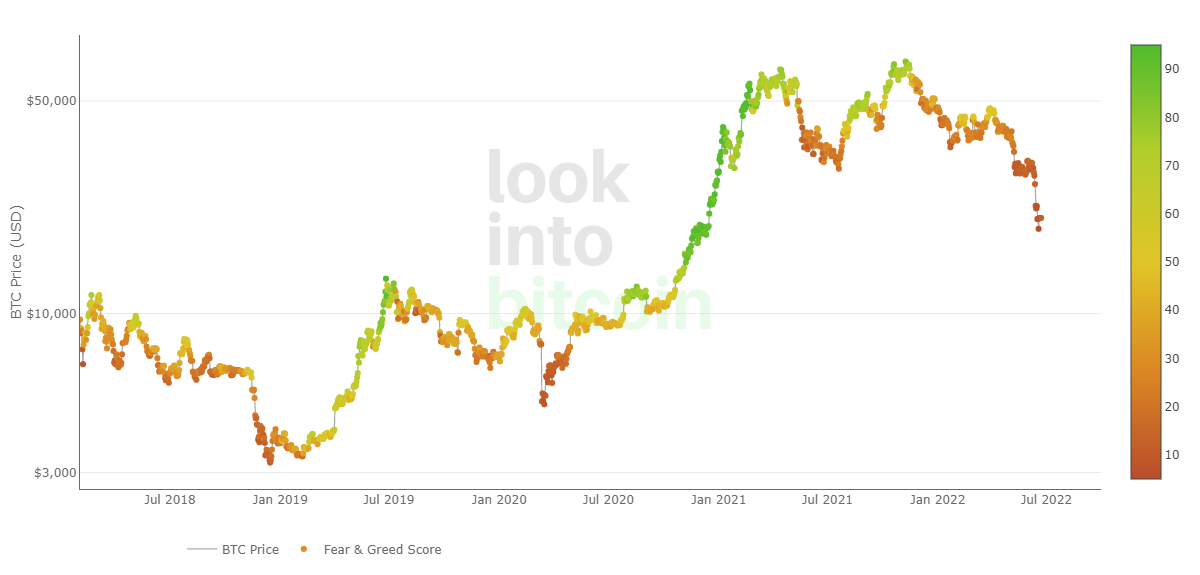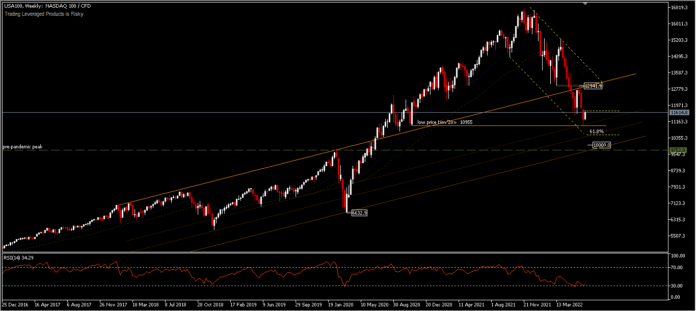Equities erased yesterday’s sharp losses, after Fed Chair Jerome Powell spoke on Capitol Hill about the state of monetary policy. In his remarks, Powell indicated that the American economy remains strong and is ready to absorb tighter monetary policy. He also stated that additional interest rate hikes were still appropriate and the pace of the rate hikes would depend on incoming data and the ever-changing economic outlook. Risks have rebounded sharply since Powell’s remarks, as Treasury yields across the curve have also risen sharply.
Meanwhile, Philadelphia Fed Harker said he was not ready to make a final decision on the next rate hike. According to him, it all depends on the incoming data; if demand weakens it might be appropriate to rise by 50 bps, but if not, then 75 bps may be appropriate.
In particular in Q2 2022, sentiment towards risk assets such as stocks, cryptocurrencies and many other sensitive assets remained negative. There are many reasons for this, but they all boil down to high inflation worldwide, which is disrupting economic activity and causing major central banks to continue their aggressive rate hikes at the same time. The combination of weak growth and soaring inflation around the world has raised concerns over stagflation while also affecting bond markets. Globally, purchasing power has fallen sharply due to the high rise in inflation, and it is possible that the slowdown will be more worrying than expected.
Meanwhile, the commodity market has recently fallen sharply, responding to the prospect of slowing global economic growth, with China a source of concern as the main commodity importer. Repeated lockdowns have consequences for all sectors of the economy, for example by reducing the demand for metals used in the construction industry.
Technical Overview
USA100 rebounded from the 11,035 saturation point after approaching the November 2020 low around 10,955. The 4th consecutive day of gains is limited to the 50.0% FR retracement level and yet to represent a strong rally momentum for a change of direction, despite the divergence bias seen from the daily oscillations. A move to the upside needs to break the minor resistance 11,759 to test the resistance at 12,941 in the short term, otherwise the bearish outlook will remain dominant. A break of the 11,035 support would confirm a further retracement to the 61.8% FR level around 10,500, but if the weakness continues then the psychological 10,000 level will become the medium term baseline.
Bitcoin still hasn’t moved from the 20,000 level in 6 trading days. The Crypto Fear & Greed Index is still showing extreme fear over the past two months, the longest on record. The price is holding on to the peak of 19,470 seen in December 2017 which is currently the support. The outlook has not changed, still dominated by worries and negative sentiment. Everything is read from the price movement which is well below the 26-day moving average and the validation of the histogram oscillations in the red zone. Some argue, however, that a bearish market could provide new buying pressure for cryptocurrencies.

This fear And Greed Index, uses a numerical scale that ranges from 0 to 100 to represent sentiment. All values greater than 50 imply that investors are greedy at the moment, while values below the threshold signify a fearful market. Edge values above 75 and below 25 mean the sentiment of the holders is “extreme greed” and “extreme fear”, respectively.
Palladium has been trading downwards since hitting a peak of 3,431 this past March. Prices remain below their 26-day moving average, amid prospects for slowing industrial growth. There has been no real confirmation for the revival of prices. The daily bias tends to be flat.
Meanwhile, despite the sanctions imposed by Western countries, Russia continues to flex its muscles as a commodity provider, especially in the energy sector as oil and gas revenues enter. Switzerland imported gold and palladium from Russia for the first time since the start of the Ukraine war, suggesting that sanctions from some buyers may be easing.
Broadly speaking, the ongoing downward trend in risk sensitive assets reflects the level of investor concern about the weak and uncertain future growth prospects.
Click here to access our Economic Calendar
Ady Phangestu
Market Analyst – HF Educational Office – Indonesia
Disclaimer: This material is provided as a general marketing communication for information purposes only and does not constitute an independent investment research. Nothing in this communication contains, or should be considered as containing, an investment advice or an investment recommendation or a solicitation for the purpose of buying or selling of any financial instrument. All information provided is gathered from reputable sources and any information containing an indication of past performance is not a guarantee or reliable indicator of future performance. Users acknowledge that any investment in Leveraged Products is characterized by a certain degree of uncertainty and that any investment of this nature involves a high level of risk for which the users are solely responsible and liable. We assume no liability for any loss arising from any investment made based on the information provided in this communication. This communication must not be reproduced or further distributed without our prior written permission.






















